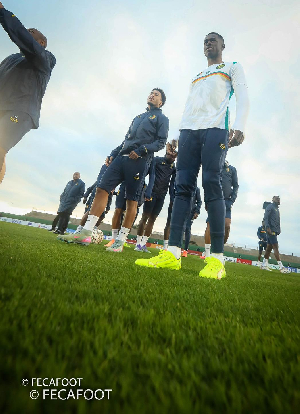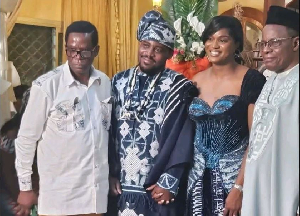No need to drill very deep to spray one of the main riches of Africa: Art. From Dakar to Kinshasa Cotonou in Cape Town, the artists are busy despite the lack of production platforms and the lack of resources, visibility and consideration.
"In modern times, creativity has been marginalized in favor of a bland bureaucracy, while traditionally, art was the center of administration in every village," regrets the artist Samson Kambalu, from Malawi. A cultural disengagement that local authorities justify by other priorities, more profitable.
While African States pretend to ignore this handy treasure, the West door to the pinnacle. The time has come for Africa to seize this opportunity to get out "of the speech made ??by those who taught him to think like poor", writes Aminata Traoré, former Minister of Culture of Mali, in The Rape of the imagination.
The creators repeat in chorus: art is a social binder as much as a factor of economic development. "Bilbao, Spain, and Berlin, Germany, offer two examples of cities revived by art", insists Toguo . The Cameroonian artist knows whereof he speaks.
He founded his country Art Center Bandjoun Station, a project that is both artistic, ecological and economic, which employs ten people and annually produces nearly three tons of maize, ten tons of beans, much coffee while organizing exhibitions.
Other virtuous private initiatives have enriched the African landscape, the pioneer art center Doual'art, launched in 1991 by Didier Schaub and Marilyn Douala Manga Bell in Douala (Cameroon), fire ArtBakery artist who Goddy Leye born in the same city in 2003, through the Zinsou Foundation in Cotonou (Benin) or 22 Apartment in Rabat (Morocco).
But these field initiatives are not enough to fill the void. "Africans must understand that creation is also a market economy", insists the Ivorian artist Paul Sika, which calls to emulate Nollywood The flourishing film industry of Nigeria. According to figures published at the time of recalculation of Nigeria's GDP in 2014, the industry is worth 1.4% of the country's GDP (against 0.8% for the cinema in the French GDP) and generates more than 300,000 direct jobs.
Why art does not he would enjoy the same momentum in Africa, whereas it is everywhere revenue generator? According to the report published in March 2015 by the British university Clare McAndrew, the global art market was valued at 51 billion euros in 2014 and employed 2.8 million people. He even helped create 438,000 jobs in related business fields.
To transform the artistic potential economic value, Africa has a lot on the board. An entire ecosystem is put in place: schools and art centers, museums, residences, grants, galleries, fairs, magazines, supervisors, insurers ... "We should not just produce art, but know the offer others, distribute, learn wrap. It should be entrepreneurs ", says Paul Sika. Some countries have well understood.
In South Africa, galleries and fairs have thrived. A great museum initiated by the collector Jochen Zeitz soon complete the picture. In Nigeria, the art has moved in lifestyle. According to British newspaper The Telegraph, the Nigerian art market would have grown by 21.3% in 2013. "Our parents would have wanted us to be doctors or lawyers. But more and more young families are challenging for artists, reports the Nigerian Emeka Orekeke photographer. The artist of today, the griot of tomorrow. "
Some have already conquered the world. Without leaving his home in Nsukka, Nigeria, Ghana's Anatsui is now the most expensive African artist - his works border on million. His youngest, the young Senegalese photographer Victor Omar Diop, knows a backfiring early career.
But behind these bridgeheads, how many talented artists wait their turn? Founder of the Fair 1:54 devoted to contemporary African art, Touria El Glaoui deplores the reluctance of mainland collectors to galleries based in Africa. "Galleries and collectors respectively need each other, and it is essential that they support each other and have confidence ", she believes. Based in Abidjan, Côte d'Ivoire, the gallery owner Cécile Fakhoury has been an evolution over the last three years. "I saw appear five or six collectors who have 30-40 years, who traveled and who return, indicates -t it. If there was a score of serious collectors in each African country, things could change. "
If the capital market is, however, the future will not be written in a public private partnership. But, as pointed curator Simon Njami at a symposium in 2012 on arts institutions in Africa, it is still necessary "than each other understand that they are not rivals, but complementary".
Opinions of Saturday, 12 September 2015
Auteur: Roxana Azimi














